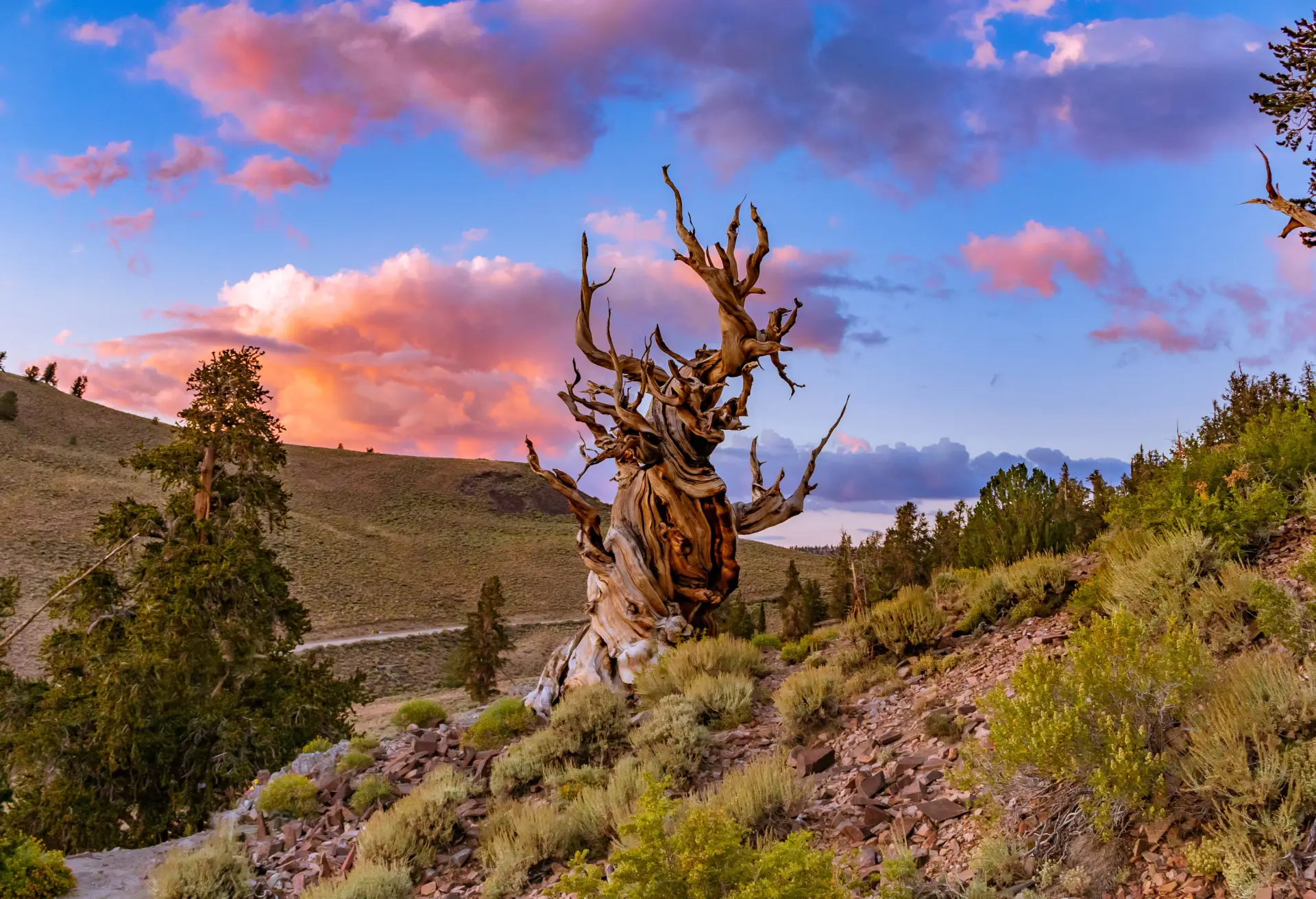Over the years, the science of dendrochronology has evolved. However, it has taken with it the most valuable gems, including the oldest living non-clonal organism on the planet, Prometheus, a 5,000 years old bristlecone pine that once stood proudly with its stature and glory in the grove near Wheeler Peak located in Nevada.
All you might find today in the Great Basin National Park are its remnants. While history is tragic, the knowledge and teachings that Prometheus bestowed upon humankind have left scientists craving more.
The species have witnessed years of history, the rise and demise of empires, the aggression of volcanic mountains, and the fury of waves. Yet these trees have stood tall, teaching us more about the times ahead than letting on with their looks.
What Are Bristlecone Pines?
The umbrella term refers to all three species of pine trees in different parts of the world. The pine trees are among the longest-living species on this planet, owing to their resilience to climatic catastrophes and low-quality soil.
Bristlecone pines found in the region of the Great Basin are faced with harsh weather, including strong winds and temperatures that drops well below the freezing point. The twisted shape of the trees gives the wise trees a human-like form.
Seeing the small size of the trees, one might expect that they’re dead or only a few years old. However, the truth of the bristlecone pine tree’s age lies hidden in its core, where the growth rings depict how many epochal events the tree has witnessed (dendrochronology).
Moreover, the trees undergo long periods of dormancy during extreme years and don’t add a growth ring to their core, indicating that they are often older than the rings found in their bark. That’s another reason scientists aren’t worried about the extinction of bristlecone pines, as the slow-growing thick bark saves the tree from rotting and erosion while making it survive in the soil filled with limestone rock.
The History of Prometheus Tree
The first ever discovered oldest living organism, the Prometheus tree, was a bristlecone pine tree cut by Donald R. Currey, a geographer who was studying the signs of the ice age in Wheeler Peak in 1964. Currey had permission to cut through the tree, and it’s believed that he deliberately did so to study the information regarding climates through the tree’s growth rings.
The tree came from local mountaineers who named it after Prometheus, the Titan of Fire in Greek Mythology, who gifted humans with the power of fire, also synonymous with knowledge.
When Currey had dug deeper, he had counted a total of 4,862 growth rings, bringing the estimation close to 4,900 years, considering the years the plant must have remained dormant. The man realized the mistake and lived with it, usually avoiding questions about the wealth of knowledge he had hijacked and stumped.
The Lessons from Bristlecone Pine Trees
You’d be mesmerized if you ever encounter the glorious creatures on your hike around the Great Basin National Park, especially near Johnson Peak. While you won’t be able to tell how old the tree is, you must remember to embrace its knowledge and wisdom.
Those trees are a sign of strength, holding on during adversities, and how all it takes is one good reason to keep going as these strong trees survive on their bark that carries food and water around the tree.
Bristlecone pine trees indicate how well-rooted you should be in your purpose to make things move around you and through you. Making a change or surviving one needs deep roots within the earth, and it’s all possible with determination to carry forward.
